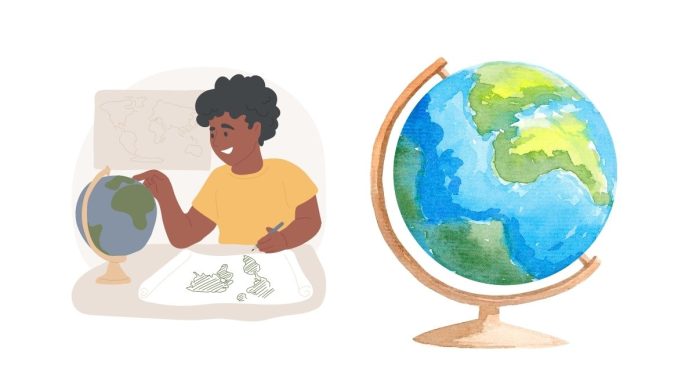The Earth is divided into large landmasses called continents. These continents are defined by geographical, cultural, and historical boundaries, and they represent diverse ecosystems, cultures, and populations. In total, there are seven continents, each unique in its own right.
1. Asia
- Size: The largest continent, covering approximately 44.58 million square kilometers.
- Population: Over 4.7 billion people, making it the most populous continent.
- Features:
- Home to diverse cultures, languages, and religions.
- Contains the highest point on Earth, Mount Everest (8,848 meters).
- Major countries include China, India, and Japan.
- Significant landmarks like the Great Wall of China and the Taj Mahal.
2. Africa
- Size: The second-largest continent, covering about 30.37 million square kilometers.
- Population: Around 1.4 billion people.
- Features:
- Known for its vast deserts like the Sahara and rich wildlife.
- The Nile, the longest river in the world, flows here.
- Countries like Nigeria, Egypt, and South Africa play major roles globally.
- Cradle of humankind, as early human fossils were found here.
3. North America
- Size: Approximately 24.71 million square kilometers.
- Population: Over 600 million people.
- Features:
- Encompasses countries like the United States, Canada, and Mexico.
- Home to the Rocky Mountains and the Grand Canyon.
- Economically significant, particularly with the presence of the U.S.
4. South America
- Size: Covers about 17.84 million square kilometers.
- Population: Over 430 million people.
- Features:
- Known for the Amazon Rainforest and Andes Mountains.
- Includes countries like Brazil, Argentina, and Colombia.
- Rich in biodiversity and cultural heritage.
5. Antarctica
- Size: Roughly 14.2 million square kilometers.
- Population: No permanent residents, only temporary researchers.
- Features:
- The coldest and least hospitable continent.
- Covered almost entirely by ice.
- Critical for climate research.
6. Europe
- Size: Covers about 10.18 million square kilometers.
- Population: Over 740 million people.
- Features:
- Historically significant, with roots in ancient civilizations like Greece and Rome.
- Countries like Germany, France, and the UK are key players.
- Known for its cultural and architectural heritage.
7. Australia
- Size: The smallest continent, spanning approximately 8.6 million square kilometers.
- Population: Around 43 million people (including Oceania).
- Features:
- Often referred to as Oceania when including neighboring islands.
- Famous for unique wildlife like kangaroos and koalas.
- Key attractions include the Great Barrier Reef and Sydney Opera House.
Conclusion
The seven continents are diverse in geography, culture, and significance. Together, they form the rich tapestry of our planet, each contributing uniquely to Earth’s natural and human history. Understanding the continents helps us appreciate the complexity and beauty of our world.


